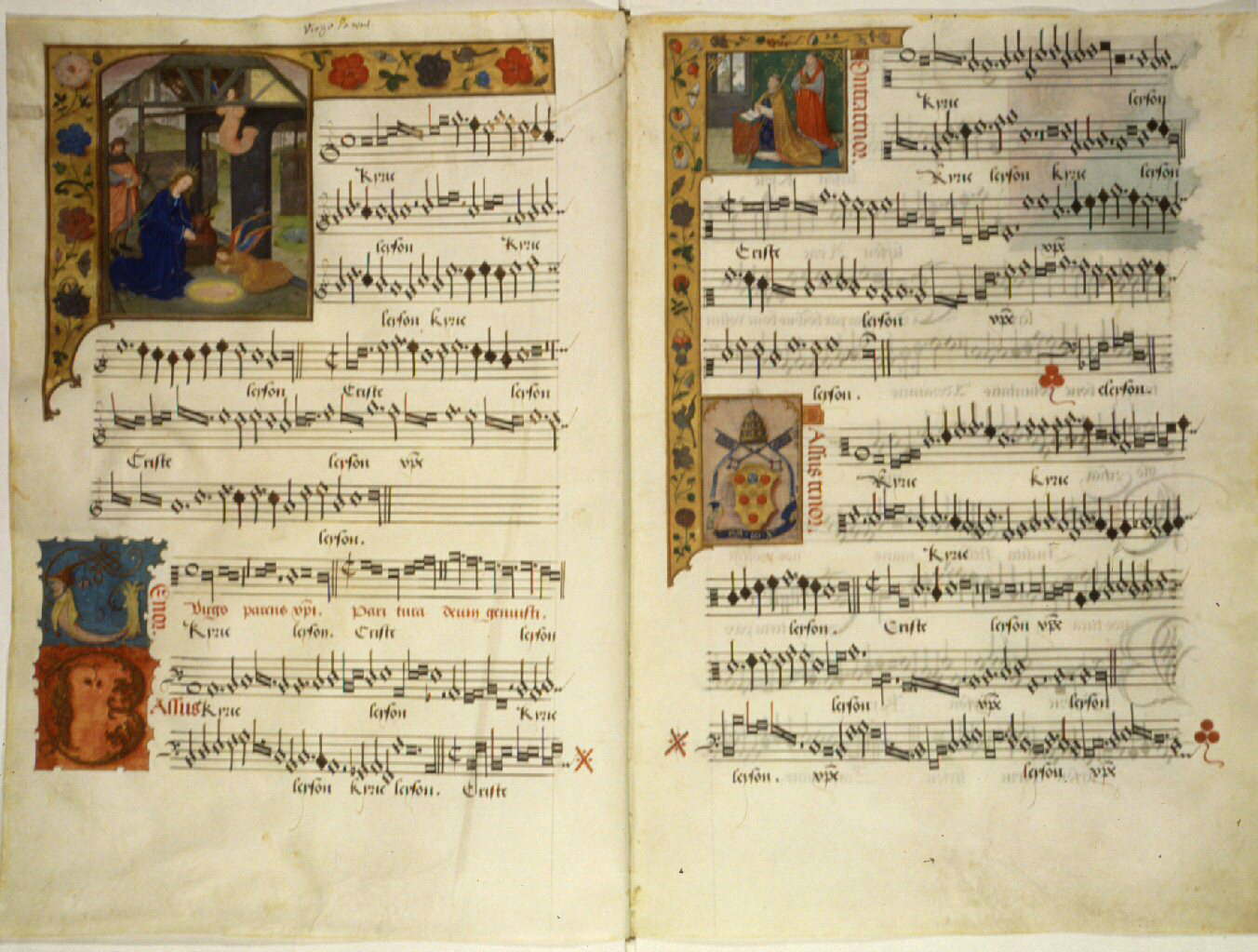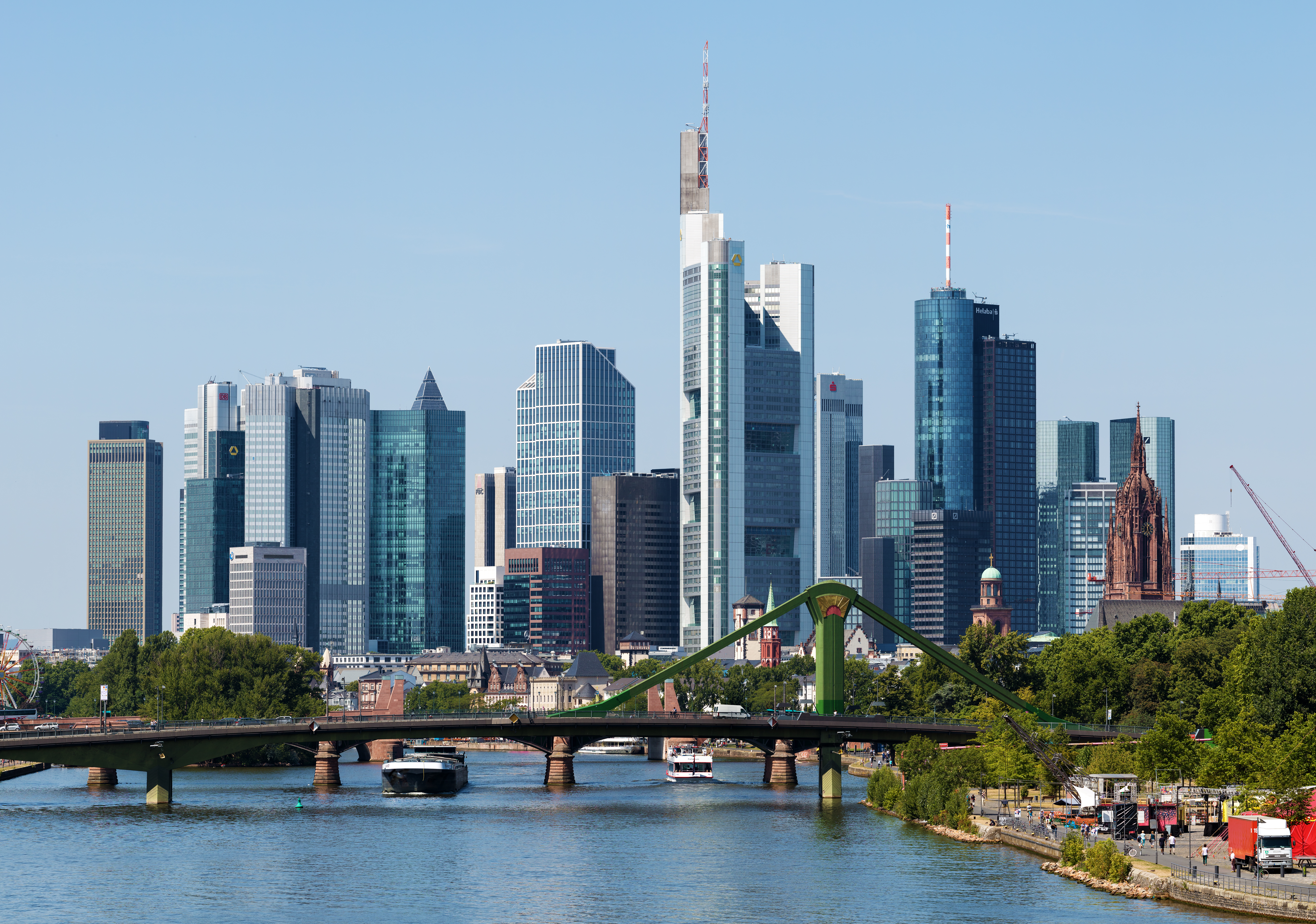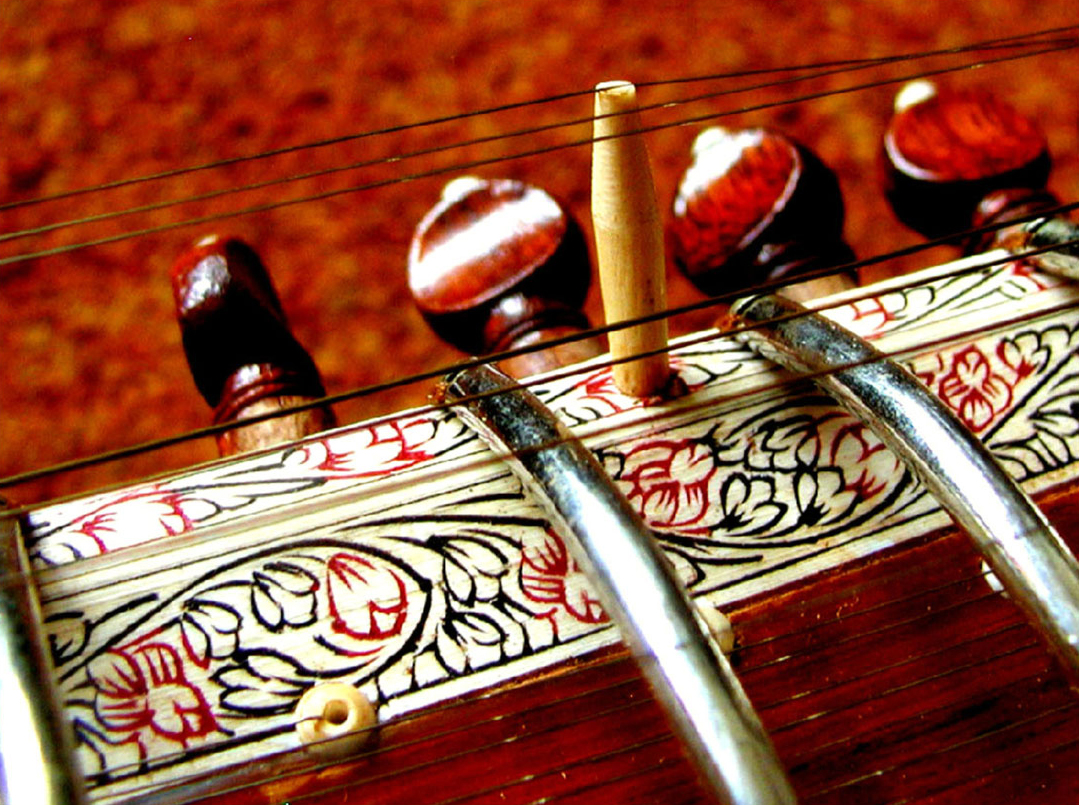|
Thomas Gabriel (composer)
Thomas Gabriel (born 25 August 1957) is a German church musician, composer and arranger. Career Born in Essen, Gabriel studied Catholic church music at the , organ with Sieglinde Ahrens and Josef Bucher. From 1983 to 1986 he served as cantor at the in Recklinghausen. He worked freelance from 1987 to 1988 for the West German Radio and the in Recklinghausen. From 1989 to 1991 he was district cantor at St. Martin, Idstein, where he founded a youth choir called Martinis in 1988. From 1992 to 1997 he was regional cantor in Saarbrücken. Since 1998, he has been cantor for the Regional Institute of Sacred Music in the Diocese of Mainz with a focus on (NGL, New sacred song), for the deaneries Offenbach, Rodgau and Seligenstadt, at the church ). Gabriel gives many concerts as an organist, harpsichordist and pianist, particularly as a member of the ''Thomas Gabriel Trio'', whose artistic focus is on jazz arrangements of the music of Johann Sebastian Bach. As a composer, Gabr ... [...More Info...] [...Related Items...] OR: [Wikipedia] [Google] [Baidu] |
Essen
Essen () is the central and, after Dortmund, second-largest city of the Ruhr, the largest urban area in Germany. Its population of makes it the fourth-largest city of North Rhine-Westphalia after Cologne, Düsseldorf and Dortmund, as well as the List of cities in Germany by population, tenth-largest city of Germany. Essen lies in the larger Rhine-Ruhr metropolitan region, List of EU metropolitan regions by GDP#2021 ranking of top 4 German metropolitan regions, second largest by GDP in the EU, and is part of the cultural area of Rhineland. Because of its central location in the Ruhr, Essen is often regarded as the Ruhr's "secret capital". Two rivers flow through the city: the Emscher in the north, and in the south the Ruhr (river), Ruhr River, which is dammed in Essen to form the and reservoirs. The central and northern boroughs of Essen historically belong to the Low German Westphalian dialects area, and the south of the city to the Low Franconian Bergish dialects, Bergish ar ... [...More Info...] [...Related Items...] OR: [Wikipedia] [Google] [Baidu] |
Mass (music)
The Mass () is a form of sacred musical composition that sets the invariable portions of the Christian Eucharistic liturgy (principally that of the Catholic Church, the Anglican Communion, and Lutheranism), known as the Mass. Most Masses are settings of the liturgy in Latin, the sacred language of the Catholic Church's Roman Rite, but there are a significant number written in the languages of non-Catholic countries where vernacular worship has long been the norm. For example, there have been many Masses written in English for a United States context since the Second Vatican Council, and others (often called "communion services") for the Church of England. Masses can be ''a cappella'', that is, without an independent accompaniment, or they can be accompanied by instrumental '' obbligatos'' up to and including a full orchestra. Many masses, especially later ones, were never intended to be performed during the celebration of an actual mass. History Middle Ages The earliest ... [...More Info...] [...Related Items...] OR: [Wikipedia] [Google] [Baidu] |
Oratorio
An oratorio () is a musical composition with dramatic or narrative text for choir, soloists and orchestra or other ensemble. Similar to opera, an oratorio includes the use of a choir, soloists, an instrumental ensemble, various distinguishable characters (e.g. soloists), and arias. However, opera is musical theatre, and typically involves significant theatrical spectacle, including sets, props, and costuming, as well as staged interactions between characters. In oratorio, there is generally minimal staging, with the chorus often assuming a more central dramatic role, and the work is typically presented as a concert piece – though oratorios are sometimes staged as operas, and operas are not infrequently presented in concert form. A particularly important difference between opera and oratorio is in the typical subject matter of the text. An opera libretto may deal with any conceivable dramatic subject (e.g. history, mythology, Richard Nixon, Anna Nicole Smith an ... [...More Info...] [...Related Items...] OR: [Wikipedia] [Google] [Baidu] |
Mainhattan
Mainhattan is a term referring to Frankfurt's skyline, especially that of its central business district, the Bankenviertel. The word is a portmanteau of Main, the river on which Frankfurt lies, and Manhattan, a reference to the inner city area's visually impressive high rises and skyscrapers, a special feature for a European city. Together with the historically important Imperial Cathedral of Saint Bartholomew and St. Paul's Church, these buildings form the skyline of the city. The first tall buildings were built in the 1960s. Banks and other financial institutions settled there, which resulted in the district also being referred to as "Bankfurt" (''Bankford''). Originally, both expressions were sometimes used derisively, but the connotation has changed to a purely positive one. The seat of the European Central Bank is located in Mainhattan. The Commerzbank Tower was the tallest building in the European Union until the Shard in London was built. After the United Kingdom ... [...More Info...] [...Related Items...] OR: [Wikipedia] [Google] [Baidu] |
Musical Theatre
Musical theatre is a form of theatre, theatrical performance that combines songs, spoken dialogue, acting and dance. The story and emotional content of a musical – humor, pathos, love, anger – are communicated through words, music, movement and technical aspects of the entertainment as an integrated whole. Although musical theatre overlaps with other theatrical forms like opera and dance, it may be distinguished by the equal importance given to the music as compared with the dialogue, movement and other elements. Since the early 20th century, musical theatre stage works have generally been called, simply, musicals. Although music has been a part of dramatic presentations since ancient times, modern Western musical theatre emerged during the 19th century, with many structural elements established by the light opera works of Jacques Offenbach in France, Gilbert and Sullivan in Britain and the works of Edward Harrigan, Harrigan and Tony Hart (theater), Hart in America. ... [...More Info...] [...Related Items...] OR: [Wikipedia] [Google] [Baidu] |
Raymund Weber
{{given name, type=both ...
Raymund can be both a given name and surname. Notable people with the name include: Given name: * Raymund Fugger (1489–1535), German businessman, Reichsgraf and art collector * Raymund Hart (1899–1960), senior commander in the Royal Air Force during World War II * Raymund Havenith (1947–1993), German classical pianist * Raymund Schwager (1935–2004), Swiss Roman Catholic priest and theologian Surname: * Monica Raymund (born 1986), American actress and director See also * Raymond Raymond is a male given name of Germanic origin. It was borrowed into English from French (older French spellings were Reimund and Raimund, whereas the modern English and French spellings are identical). It originated as the Germanic ᚱᚨᚷ� ... [...More Info...] [...Related Items...] OR: [Wikipedia] [Google] [Baidu] |
Andreas Boltz
Andreas Boltz (born 13 July 1964) is a German church musician and composer. From autumn 1993 until 2011, he was the Regional Cantor of the diocese of Mainz in Darmstadt. He was awarded the Premio Speciale in 1992 at the International Composers Competition in Trieste. Since June 2011, he has been cathedral music director at the Frankfurt Cathedral. Life Boltz was born in Würzburg. He studied Catholic church music at the Hochschule für Musik Würzburg. In 1989 he passed the A Diploma and the State music teachers examination. In 1992 he earned his Master Class Diploma of artistic organ playing in the master class of Günther Kaunzinger. He studied further with Fritz ter Wey and Eric Ericson (choral conducting), Daniel Roth, Françoise Renet, Guy Bovet and Jon Laukvik (organ), Glen Wilson (harpsichord), Kurt Suttner ( vocal physiology) and Zsolt Gárdonyi (composition). From 1989 to 1993 he was assistant to the Kapellmeister at the Würzburg Cathedral. From autumn 1993 unti ... [...More Info...] [...Related Items...] OR: [Wikipedia] [Google] [Baidu] |
Dan Zerfaß
Dan Zerfaß (born 1968) is a German classical organist, the cantor at the Worms Cathedral and academic teacher. Career Born in Simmern, Zerfaß was a student of Regional cantor Franz Leinhäuser in Oberwesel. He studied at the Hochschule für Musik Frankfurt, finishing in 1992 with top honors as a church musician and graduating in 1993 as a recital organist. Influential teachers were Edgar Krapp (organ), Wolfgang Schäfer (choral and orchestral conducting) and Godehard Joppich (Gregorian chant). He took master classes with Daniel Roth, Wolfgang Rübsam and Guy Bovet (organ), Egidius Doll, Peter Planyavsky and Theo Brandmüller (organ improvisation) and Günther Ludwig (piano). In 1989, Zerfaß became cantor at St. Albert in Frankfurt and in 1996 the regional cantor at St. Bonifatius in Bad Nauheim. Since 1999, he has been the cantor at the cathedral St. Peter in Worms. From 1993 to 1997 he taught liturgical organ playing at the Hochschule für Musik Karlsruhe and is supervi ... [...More Info...] [...Related Items...] OR: [Wikipedia] [Google] [Baidu] |
Martin Berger (musician)
Martin Anton Berger (born February 29, 1972, in Wadern) is a German conductor, choral director, organist, music educator, musicologist and university professor. Biography Berger grew up in Merzig and studied sacred music, music education and German studies at the Hochschule für Musik Saar in Saarbrücken and at the Robert Schumann Hochschule in Düsseldorf, as well as conducting with an emphasis on choral conducting. Study trips and artistic projects have taken him to Sweden, among other places. He received formative impulses for his artistic work from Raimund Wippermann, Eric Ericson, Anders Eby, and Gary Graden. From November 2002 to March 2013, he was music director at Würzburg Cathedral, where he was in charge of the Domchor, the Domsingknaben, the Mädchenkantorei, and the Kammerchor. In 2007, he won the Gold Diploma at the ''Second Malta International Choir Competition Festival of Sacred and Secular Music'' in Valletta, Malta with the Würzburg Cathedral Kammerchor; th ... [...More Info...] [...Related Items...] OR: [Wikipedia] [Google] [Baidu] |
Würzburg Cathedral
Würzburg Cathedral () is a Roman Catholic cathedral in Würzburg in Bavaria, Germany, dedicated to Saint Kilian. It is the seat of the Bishop of Würzburg and has served as the burial place for the Prince-Bishops of Würzburg for hundreds of years. With an overall length of 103 metres, it is the fourth largest Romanesque church building in Germany, and a masterpiece of German architecture from the Salian period. Notable later additions include work by Tilman Riemenschneider and Balthasar Neumann. The cathedral was heavily damaged by British bombs in March 1945 but rebuilt post-World War II. History A cathedral and an attached monastery existed in Würzburg as early as the 8th Century, presumably built by the city's first bishop, Burchard. On July 8, 752, Burchard transferred the relics of Kilian and his companions Totnan and Colman to the cathedral. The skulls of these three saints are still kept in the High Altar of the cathedral. The cathedral was destroyed by fire ... [...More Info...] [...Related Items...] OR: [Wikipedia] [Google] [Baidu] |
Didgeridoo
The didgeridoo (;()), also spelt didjeridu, among other variants, is a wind instrument, played with vibrating lips to produce a continuous Drone (music), drone while using a special breathing technique called circular breathing. The didgeridoo was developed by Aboriginal Australians, Aboriginal peoples of northern Australia at least 1,000 years ago, and is now in use around the world, though still most strongly associated with Indigenous Australian music. In the Yolŋu languages of the indigenous people of northeast Arnhem Land the name for the instrument is the yiḏaki, or more recently by some, mandapul. In the Bininj Gun-Wok, Bininj Kunwok language of West Arnhem Land it is known as mako (pronounced, and sometimes spelt, as mago). A didgeridoo is usually cylindrical or Cone (geometry), conical, and can measure anywhere from long. Most are around long. Generally, the longer the instrument, the lower its pitch or key. Flared instruments play a higher pitch than unflared in ... [...More Info...] [...Related Items...] OR: [Wikipedia] [Google] [Baidu] |
Sitar
The sitar ( or ; ) is a plucked stringed instrument, originating from the Indian subcontinent, used in Hindustani classical music. The instrument was invented in the 18th century, and arrived at its present form in 19th-century India. Khusrau Khan, an 18th-century figure of the Mughal Empire has been identified by modern scholarship as the inventor of the sitar. According to most historians, he developed the sitar from the setar, an Iranian instrument of Abbasid or Safavid origin. Used widely throughout the Indian subcontinent, the sitar became popularly known in the wider world through the works of Ravi Shankar, beginning in the late 1950s and early 1960s. The advent of Psychedelia, psychedelic culture during the mid-to-late 1960s set a trend for the use of the sitar in popular music, sitar in Western popular music, with the instrument appearing on tracks by bands such as the Beatles, the Rolling Stones, Metallica and many others. Etymology The word ''sitar'' is derived from t ... [...More Info...] [...Related Items...] OR: [Wikipedia] [Google] [Baidu] |





